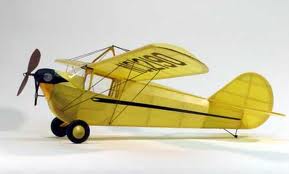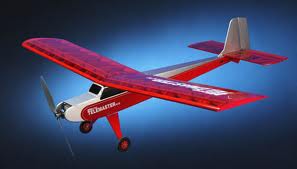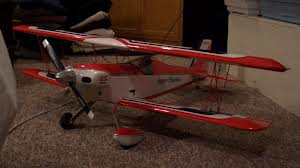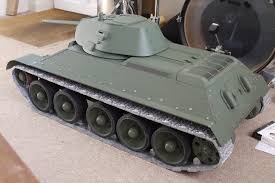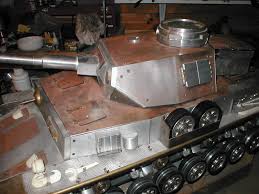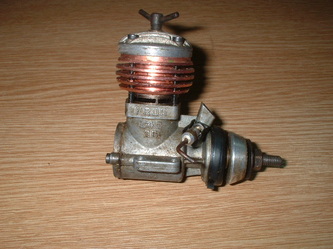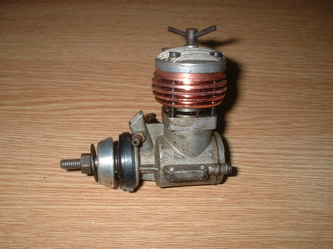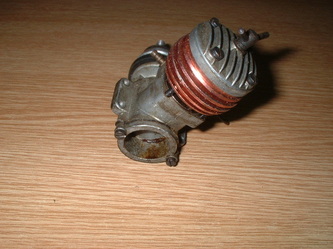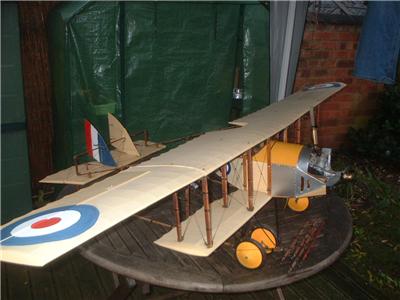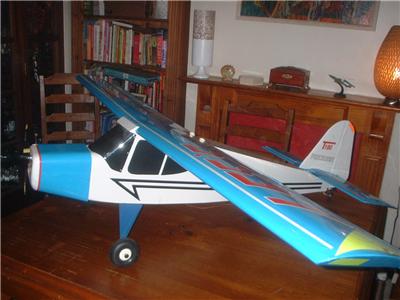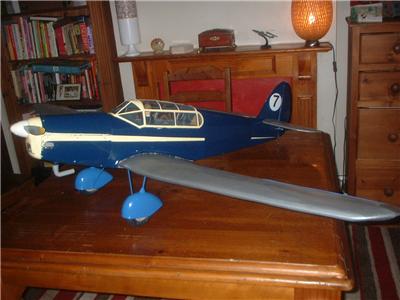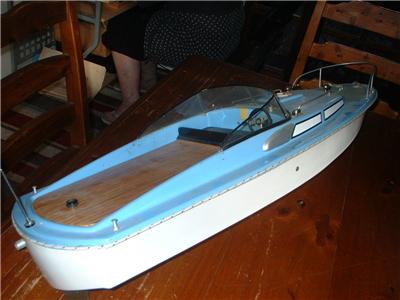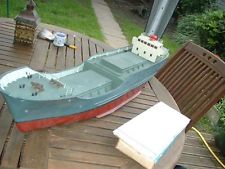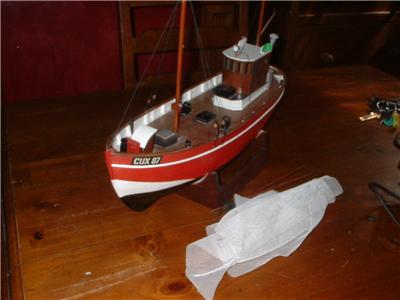Contact Form
Keith Ridley
Tel 02476 338641
Mobile 07747020513
We are based in Coventry.
email. [email protected]
WANTED ALL TYPES OF RADIO CONTROLLED MODELS, AIRCRAFT BOATS CARS TANKS OR ANY OTHER TYPE OF MODEL
Selling your Flying Model aircraft collection.
Model aircraft Wanted, We buy radio controlled RC model flying aeroplanes helicopters aircraft planes and engines. Free Flight, Control Line, Rubber Powered, Spares parts and accessories. Balsa kits,
All collections bought for cash.
ALSO WANTED RC RADIO CONTROLLED CARS, RACING CARS, MONSTER TRUCKS
MODEL BOATS YACHT'S SUBMARINES,
MILITARY TANKS, TAMIYA ETC. COMPLETE AND SPARES
Radio controlled model tanks
1/16 - 1/6 scale Heng long Tamiya Mato Torro Taigen Taya Dragon Xcite RC , plastic and full metal editions, collections and single items, also 1/6 scale Dragon and Armortek etc, even kits and part built projects. Distance no object we travel to view and purchase.
Have you got an old collection of radio controlled RC model aeroplanes stashed in the attic or garage. Why not turn them into cash and clear the clutter. We buy all makes and models for spares or renovation. Petrol and diesel engines wanted, old vintage and new working or not. Immediate payment made for all collections. Don't worry about them being dusty damaged as we buy all condition lots. Including Parkzone, Keilkraft, Veron, Reality Craft, Spectrum, Dynam, Futaba, Century, Focas, Graupner, Deagostini, Mavrick, ASP 4 stroke, Jamara, Kyosho, Hobbyzone, Axion, Flightline, Hubsan, Marutaka, Guan'li, flysonic, Kyosho, e-flite, eflite, Art-Tech, Spectrum, Multiplex, Parkzone, Top Gun, Black Horse, Mill, Dyno, ETA, ME Snipe, Oliver Tiger, Webra, Frog, Elfin, OS, ED, PAW, AM, Elfin, Cox, Allbon, DC, Davies Charlton, vintage model Diesel engines, RTF, ARTF, etc. All makes and models required.
Call Keith today and make arrangements for a free no obligation valuation. We will travel to view all large collections anywhere within the mainland UK.
Tel 02476 338641 or mobile 07747020513 or email [email protected]
Keith has had many years experience with model aeroplanes, rubber and engine powered and also radio controlled. Keith started making balsa wood models before the age of 10 and became very accomplished having appeared in Aero Modeller magazine on more than one occasion. Keith can offer his knowledge and experience when making appropriate valuations. Travel no object.
We have bought several large collection over the last few weeks and we need to buy more. So if you are retired from your hobby, don't let them gather dust in the garage of loft. Give us a call and see what we can offer you.
An history of RC model aircraft from Wikipedia
The earliest examples of electronically guided model aircraft were
hydrogen-filled model airships of the late 19th century. They were
flown as a music hall act around theater auditoriums using a basic form of
spark-emitted radio signal.[2] In the 1920s, the Royal Aircraft Establishment of Britain built and tested the pilotless Larynx, a monoplane with a 100-mile (160 km) range. It
was not until the 1930s that the British came up with the Queen Bee, a gunnery target version of the de Havilland Tiger Moth, and similar target aircraft. Radio control
systems for model aircraft were developed in the late 1940s and early 1950s by
English enthusiasts such as Howard Boys, who patented his 'Galloping Ghost'
system of proportional control and became a regular contributor to Aeromodeller on the topic.[3]
In the United States, two pioneers in the field of controlling model planes
by radio were Ross Hull and Clinton DeSoto, officers of the American
Radio Relay League. During 1937, these two men successfully built
and flew several large R/C gliders in the first public demonstration of
controlled flights, in the course of which their sailplanes made more than 100
flights. A scheduled R/C event at the 1937 National Aeromodeling Championships attracted six entrants: Patrick Sweeney, Walter Good, Elmer Wasman, Chester Lanzo, Leo Weiss and B. Shiffman, Lanzo winning with the lightest (6 pounds) and simplest model plane, although his flight was rather erratic and lasted only several minutes. Sweeney and Wasman both had extremely short (5-second) flights when their aircraft took off, climbed steeply, stalled and crashed. Sweeney, however, had the distinction of being the first person to attempt a R/C flight in a national contest. The other
three entrants were not even able to take off, although Good, with his twin
brother William, persisted with developing R/C systems, culminating in first
placings in the 1940 US Nationals and again after the end of World War II, in
1947. Their historic R/C model airplane, which they named the “Guff,” was
presented to the National Air and Space Museum in Washington, D.C., in May, 1960, where it can be seen today.[4]
Call Keith today and make arrangements for a free no obligation valuation. We will travel to view all large collections anywhere within the mainland UK.
Tel 02476 338641 or mobile 07747020513 or email [email protected]
Keith has had many years experience with model aeroplanes, rubber and engine powered and also radio controlled. Keith started making balsa wood models before the age of 10 and became very accomplished having appeared in Aero Modeller magazine on more than one occasion. Keith can offer his knowledge and experience when making appropriate valuations. Travel no object.
We have bought several large collection over the last few weeks and we need to buy more. So if you are retired from your hobby, don't let them gather dust in the garage of loft. Give us a call and see what we can offer you.
An history of RC model aircraft from Wikipedia
The earliest examples of electronically guided model aircraft were
hydrogen-filled model airships of the late 19th century. They were
flown as a music hall act around theater auditoriums using a basic form of
spark-emitted radio signal.[2] In the 1920s, the Royal Aircraft Establishment of Britain built and tested the pilotless Larynx, a monoplane with a 100-mile (160 km) range. It
was not until the 1930s that the British came up with the Queen Bee, a gunnery target version of the de Havilland Tiger Moth, and similar target aircraft. Radio control
systems for model aircraft were developed in the late 1940s and early 1950s by
English enthusiasts such as Howard Boys, who patented his 'Galloping Ghost'
system of proportional control and became a regular contributor to Aeromodeller on the topic.[3]
In the United States, two pioneers in the field of controlling model planes
by radio were Ross Hull and Clinton DeSoto, officers of the American
Radio Relay League. During 1937, these two men successfully built
and flew several large R/C gliders in the first public demonstration of
controlled flights, in the course of which their sailplanes made more than 100
flights. A scheduled R/C event at the 1937 National Aeromodeling Championships attracted six entrants: Patrick Sweeney, Walter Good, Elmer Wasman, Chester Lanzo, Leo Weiss and B. Shiffman, Lanzo winning with the lightest (6 pounds) and simplest model plane, although his flight was rather erratic and lasted only several minutes. Sweeney and Wasman both had extremely short (5-second) flights when their aircraft took off, climbed steeply, stalled and crashed. Sweeney, however, had the distinction of being the first person to attempt a R/C flight in a national contest. The other
three entrants were not even able to take off, although Good, with his twin
brother William, persisted with developing R/C systems, culminating in first
placings in the 1940 US Nationals and again after the end of World War II, in
1947. Their historic R/C model airplane, which they named the “Guff,” was
presented to the National Air and Space Museum in Washington, D.C., in May, 1960, where it can be seen today.[4]
MODEL AIRCRAFT BOUGHT FOR CASH. KITS, COMPLETE MODELS, SPARES, ENGINES, MANUALS. COLLECTIONS. WHY NOT SELL ALL YOUR UNWANTED GARAGE OR ATTIC ACCUMULATIONS AND TURN THEM INTO CASH.
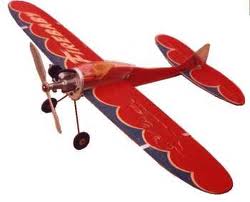
From Wikipedia, the free encyclopedia
Control line (also called U-Control ) is a simple and light way of controlling a flying model aircraft. The aircraft is connected to the operator by a pair of lines, attached to a handle, that work the elevator of the model. This allows the model to be controlled in the pitch axis. It is constrained to fly on the surface of a hemisphere by the control lines. There is also a control system that uses only a single solid wire that is twisted around its own axis, that spins a spiral inside the airplane to move the elevator. While it can be used with some success on any type of model, it is best for speed models where the reduced aerodynamic drag of the single line is a significant advantage. The control provided is not as precise as the two-line control system. The control lines are usually either stranded or solid wires of anywhere from 0.008 in (0.20 mm) to 0.021 in (0.53 mm). Sewing thread or fishing line may be used instead of wires to control very small models, but its air resistance is greater. A third line is sometimes used to control the engine throttle, and more lines may be added to control other functions. Electrical signals sent over the wires are sometimes used in scale models to control functions such as retracting undercarriage and flaps. Almost all control-line
models are powered with conventional model aircraft engines of various types.
But it is possible to fly control-line models that do not use on-board propulsion, in a mode called "whip-powered", where the pilot "leading" the model with his arm and wind supply the necessary energy to keep the airplane aloft, in a fashion similar to kite-flying.
The segment of model aviation known as free flight is the original form of the aeromodeling hobby, extending back centuries.
The essence of free-flight is that the aircraft have no need for external control, for instance by radio. Aircraft of this type have been flown for over two centuries. They are designed to be inherently stable in flight; if disturbed by a gust of wind or a thermal current they will return automatically to stable flight. For this reason most free flight aircraft are not replicas of
man-carrying ones, for they are designed for a quite different purpose. Their stability is achieved by a combination of design and trim, - the relationship between centre of gravity, wing and tailplane incidence and rudder setting.
With their much lower wing loading, free-flight aircraft fly much slower than the engine-powered radio-controlled aircraft that many people first think of when ‘model aircraft’ is mentioned. Most of them glide at little more than walking pace and few weigh more than 500 grams.
Usually the sole object in free-flight is flight duration, and one of the sport’s
fascinations and challenges is to design the most efficient aircraft within the various competition limits on such parameters as minimum weight, maximum wing area and motive power. It is solely a stopwatch, rather than any judge’s opinion, that decides the result.
When flown competitively, the usual aim is maximum flight duration. In the
case of models flown outdoors, the modeller attempts to launch the model into
rising column of air, a thermal. These outdoor free flight models tend to
be designed for two very different flying modes: climbing rapidly under power or
tow, and gliding slowly while circling with minimum fall rate. Much of the
challenge in designing and flying these models is to maintain aerodynamic
stability in both modes and to make a smooth transition between them. Modern
models use mechanical or electronical timers to move control surfaces at preset
times. Detecting the thermal into which to launch is vital and can involve
several methods, ranging from radio telemetered temperature and winds peed
measurements plotted on a chart recorder to Mylar streamers or soap bubbles to
visualize the rising air.
2007 FAI Free Flight World Championships in Odessa, Ukraine Because competitions normally involve up to seven rounds during the day, each flown to a maximum flight time hard to achieve without thermal assistance; an automatic on-board time switch upsets the trim of the aircraft when the "max" is achieved, to bring the aircraft down safely and quickly. Locating and recovering the aircraft for further flights is an important part of free-flight. Many aircraft carry radio location beacons, and flyers will use GPS, binoculars, a compass and a directionally sensitive radio tracking receiver to assist them. A day's flying and retrieval may well involve 20 miles (32 km) or so on foot or on bike, depending on wind strength.
Models flown indoors do not depend on rising air currents, but they must be
designed for maximum flight efficiency, because of the limited energy stored in
the rubber or electric power source.
Within each category, there are different classes. Typically, there is an Fédération Aéronautique Internationale (FAI) world-championship class, a so-called mini class, an open class, and possibly any number of national or unofficial classes, for which regional or national competitions may be held. Within the competition classification codes specified by the FAI, free flight aero modelling gets the generic code of F1, where the "F" stands for flying model aircraft in general, with the "1" standing specifically for free flight models.
Rubber-powered
Rubber-powered models are powered by the stored energy of a twisted elastic material. These range from the simple rubber-band powered toys available in many toy stores, up to the open rubber class, examples of which often use 200 g of rubber in their "motor". Rubber does not produce a constant power output; when fully wound a rubber motor produces its maximum torque, but this drops rapidly at first before 'plateau-ing', finally declining again, after which the propeller stops. Using this initial burst efficiently is vital and automatically
variable pitch propellers help here, together with timer-operated changes of wing and tail plane incidence and of rudder setting. At the end of the power run the blades fold back alongside the fuselage to minimise drag during the glide.
P-30 at stooge
The FAI rubber class is F1B, also known as Wakefield. Charles Dennis Rushing
has written on the history of the Wakefield Cup F1B models may have a maximum of 30 g of rubber motor, and the empty weight of the airframe must be at least 200 g. The maximum total area of the model must be less than 19 dm2. The mini rubber class is Coupe d'Hiver (alsoknown as F1G). "Coupe" models have no area restrictions. The maximum weight of
rubber allowed is 10 g, and the minimum empty weight of the airframe is 70g. .
Open rubber is a popular event, featuring large models with enormous amounts of
rubber crammed into them. Open models often have 50% of their flying weight
composed of rubber.
P-30 is a common beginner's event. A P-30 must use an unmodified commercially
available plastic propeller. P-30 has a maximum wingspan and overall length of
30 inches (76.2 cm), and uses maximum 10 g of rubber. The empty
airframe must weigh at least 40 g.
F1C Model by Eugene VERBITSKY (WC). Note the folding wings
The most well known beginner rubber powered models are the AMA Cub (also known in the USA as the "AMA Delta Dart"), Denny Dart, Canarsie Canarie and Squirrel. They are commonly used in workshops or for beginners to learn about construction and flying.
The Squirrel, designed by Darcy Whyte is the easiest to build. Free plans are
available for download for a Squirrel.
The smallest rubber powered model aircraft was built in 1931 by a Philadelphia high school student, called the Flying Flea and was one and a quarter inches long and could remain airborne for approximately one minute.
Power
Power models are those with an on board power source which is not a rubber motor. Frequently this is an internal combustion engine, and the engine run is limited, typically to just five seconds. Designing an aircraft which climbs as high as possible, with minimum drag at a low lift coefficient, but then must convert to a slow flying glider, is a challenge unique in aviation. However, the category also includes compressed gas motors and electric power. The FAI power class is F1C. F1C models are equipped with an internal combustion engine of up to 2.5cc and need to weight at least 300 g per 1cc (i.e. minimum weight of a 2.5cc equipped model is 750 g). These engines are usually custom made for optimal power output and often yield 1 hp (0.75 kW) at more than 30,000 RPM. Many F1C models feature folding wings, to minimize the aerodynamic drag during the climb phase.
Another type of powered free flight models is CO2 (its FAI category is F1K ). These models fly using a small engine powered by carbon dioxide. This models are very light. The amount of CO2 is limited to 2 cm³, which is enough for cca. 2 minutes of flight.
Another popular free flight Class is FAI category F1J which is similar to F1C however the engines are 1/2A Class is less than .050 cubic inches. These models use engines
like the Cox Tee Dee .049 model engine.
Sport free flight fliers also use Cox model engines and others to power free flight
scale models.
Scale rubber
Rubber scale models replicate full-scale aircraft. Scale documentation is used at contests to check the accuracy and compliance of the model to the full-scale aircraft modelled.
Most rubber scale models are in the 20” to 30” wingspan range. Exceptions arf
or "Peanut Scale" class models, with a maximum 13” wingspan and "Jumbo Scale"
class models, with 36” or greater wingspan. The models are powered with loops of
rubber matched to the weight of the model and the diameter and pitch of the
propeller. The length of the loops often exceed twice the length of the fuselage
of the model. The flying duration of the scale model is greatly increased
because of the number of windings that can be made on such a long loop of rubber
with multiple strands. A mechanical winder is used and the rubber is stretched
up to fives times original length to pack in maximum winds on the motor. In
flight, these models look just like the real thing. All that is missing is the
noise of the engine in the original airplane. Experts can achieve spectacular
flights from obscure designs such as the Wright brothers original and Bleriot’s
channel crosser, to one-of-a-kind Depression era homebuilts and modern day
experimental aircraft.
From Wikipedia, the free encyclopedia
Model boats wanted. Any type make or condition including complete part built kits. Steam, electric IC, Radio controlled also bought for cash payments.
The essence of free-flight is that the aircraft have no need for external control, for instance by radio. Aircraft of this type have been flown for over two centuries. They are designed to be inherently stable in flight; if disturbed by a gust of wind or a thermal current they will return automatically to stable flight. For this reason most free flight aircraft are not replicas of
man-carrying ones, for they are designed for a quite different purpose. Their stability is achieved by a combination of design and trim, - the relationship between centre of gravity, wing and tailplane incidence and rudder setting.
With their much lower wing loading, free-flight aircraft fly much slower than the engine-powered radio-controlled aircraft that many people first think of when ‘model aircraft’ is mentioned. Most of them glide at little more than walking pace and few weigh more than 500 grams.
Usually the sole object in free-flight is flight duration, and one of the sport’s
fascinations and challenges is to design the most efficient aircraft within the various competition limits on such parameters as minimum weight, maximum wing area and motive power. It is solely a stopwatch, rather than any judge’s opinion, that decides the result.
When flown competitively, the usual aim is maximum flight duration. In the
case of models flown outdoors, the modeller attempts to launch the model into
rising column of air, a thermal. These outdoor free flight models tend to
be designed for two very different flying modes: climbing rapidly under power or
tow, and gliding slowly while circling with minimum fall rate. Much of the
challenge in designing and flying these models is to maintain aerodynamic
stability in both modes and to make a smooth transition between them. Modern
models use mechanical or electronical timers to move control surfaces at preset
times. Detecting the thermal into which to launch is vital and can involve
several methods, ranging from radio telemetered temperature and winds peed
measurements plotted on a chart recorder to Mylar streamers or soap bubbles to
visualize the rising air.
2007 FAI Free Flight World Championships in Odessa, Ukraine Because competitions normally involve up to seven rounds during the day, each flown to a maximum flight time hard to achieve without thermal assistance; an automatic on-board time switch upsets the trim of the aircraft when the "max" is achieved, to bring the aircraft down safely and quickly. Locating and recovering the aircraft for further flights is an important part of free-flight. Many aircraft carry radio location beacons, and flyers will use GPS, binoculars, a compass and a directionally sensitive radio tracking receiver to assist them. A day's flying and retrieval may well involve 20 miles (32 km) or so on foot or on bike, depending on wind strength.
Models flown indoors do not depend on rising air currents, but they must be
designed for maximum flight efficiency, because of the limited energy stored in
the rubber or electric power source.
Within each category, there are different classes. Typically, there is an Fédération Aéronautique Internationale (FAI) world-championship class, a so-called mini class, an open class, and possibly any number of national or unofficial classes, for which regional or national competitions may be held. Within the competition classification codes specified by the FAI, free flight aero modelling gets the generic code of F1, where the "F" stands for flying model aircraft in general, with the "1" standing specifically for free flight models.
Rubber-powered
Rubber-powered models are powered by the stored energy of a twisted elastic material. These range from the simple rubber-band powered toys available in many toy stores, up to the open rubber class, examples of which often use 200 g of rubber in their "motor". Rubber does not produce a constant power output; when fully wound a rubber motor produces its maximum torque, but this drops rapidly at first before 'plateau-ing', finally declining again, after which the propeller stops. Using this initial burst efficiently is vital and automatically
variable pitch propellers help here, together with timer-operated changes of wing and tail plane incidence and of rudder setting. At the end of the power run the blades fold back alongside the fuselage to minimise drag during the glide.
P-30 at stooge
The FAI rubber class is F1B, also known as Wakefield. Charles Dennis Rushing
has written on the history of the Wakefield Cup F1B models may have a maximum of 30 g of rubber motor, and the empty weight of the airframe must be at least 200 g. The maximum total area of the model must be less than 19 dm2. The mini rubber class is Coupe d'Hiver (alsoknown as F1G). "Coupe" models have no area restrictions. The maximum weight of
rubber allowed is 10 g, and the minimum empty weight of the airframe is 70g. .
Open rubber is a popular event, featuring large models with enormous amounts of
rubber crammed into them. Open models often have 50% of their flying weight
composed of rubber.
P-30 is a common beginner's event. A P-30 must use an unmodified commercially
available plastic propeller. P-30 has a maximum wingspan and overall length of
30 inches (76.2 cm), and uses maximum 10 g of rubber. The empty
airframe must weigh at least 40 g.
F1C Model by Eugene VERBITSKY (WC). Note the folding wings
The most well known beginner rubber powered models are the AMA Cub (also known in the USA as the "AMA Delta Dart"), Denny Dart, Canarsie Canarie and Squirrel. They are commonly used in workshops or for beginners to learn about construction and flying.
The Squirrel, designed by Darcy Whyte is the easiest to build. Free plans are
available for download for a Squirrel.
The smallest rubber powered model aircraft was built in 1931 by a Philadelphia high school student, called the Flying Flea and was one and a quarter inches long and could remain airborne for approximately one minute.
Power
Power models are those with an on board power source which is not a rubber motor. Frequently this is an internal combustion engine, and the engine run is limited, typically to just five seconds. Designing an aircraft which climbs as high as possible, with minimum drag at a low lift coefficient, but then must convert to a slow flying glider, is a challenge unique in aviation. However, the category also includes compressed gas motors and electric power. The FAI power class is F1C. F1C models are equipped with an internal combustion engine of up to 2.5cc and need to weight at least 300 g per 1cc (i.e. minimum weight of a 2.5cc equipped model is 750 g). These engines are usually custom made for optimal power output and often yield 1 hp (0.75 kW) at more than 30,000 RPM. Many F1C models feature folding wings, to minimize the aerodynamic drag during the climb phase.
Another type of powered free flight models is CO2 (its FAI category is F1K ). These models fly using a small engine powered by carbon dioxide. This models are very light. The amount of CO2 is limited to 2 cm³, which is enough for cca. 2 minutes of flight.
Another popular free flight Class is FAI category F1J which is similar to F1C however the engines are 1/2A Class is less than .050 cubic inches. These models use engines
like the Cox Tee Dee .049 model engine.
Sport free flight fliers also use Cox model engines and others to power free flight
scale models.
Scale rubber
Rubber scale models replicate full-scale aircraft. Scale documentation is used at contests to check the accuracy and compliance of the model to the full-scale aircraft modelled.
Most rubber scale models are in the 20” to 30” wingspan range. Exceptions arf
or "Peanut Scale" class models, with a maximum 13” wingspan and "Jumbo Scale"
class models, with 36” or greater wingspan. The models are powered with loops of
rubber matched to the weight of the model and the diameter and pitch of the
propeller. The length of the loops often exceed twice the length of the fuselage
of the model. The flying duration of the scale model is greatly increased
because of the number of windings that can be made on such a long loop of rubber
with multiple strands. A mechanical winder is used and the rubber is stretched
up to fives times original length to pack in maximum winds on the motor. In
flight, these models look just like the real thing. All that is missing is the
noise of the engine in the original airplane. Experts can achieve spectacular
flights from obscure designs such as the Wright brothers original and Bleriot’s
channel crosser, to one-of-a-kind Depression era homebuilts and modern day
experimental aircraft.
From Wikipedia, the free encyclopedia
Model boats wanted. Any type make or condition including complete part built kits. Steam, electric IC, Radio controlled also bought for cash payments.
Contact Form
Keith Ridley
Tel 02476 338641
Mobile 07747020513
We are based in Coventry.
email. [email protected]
